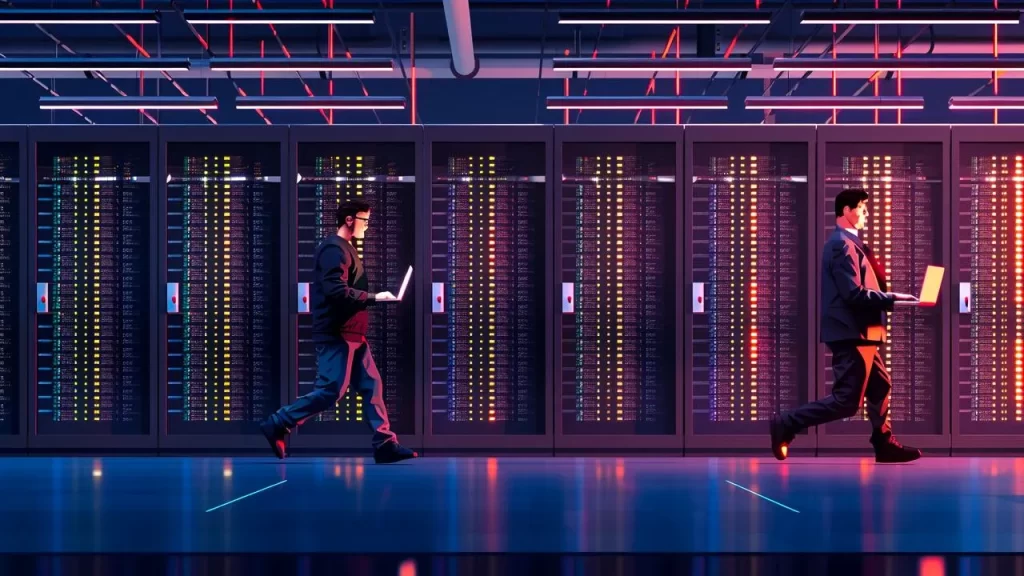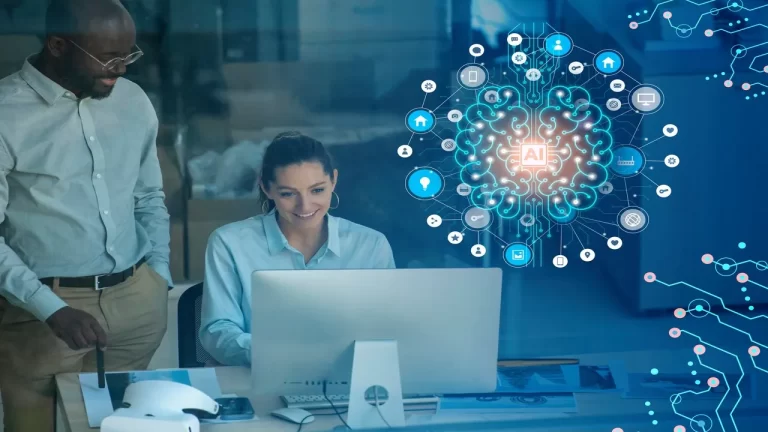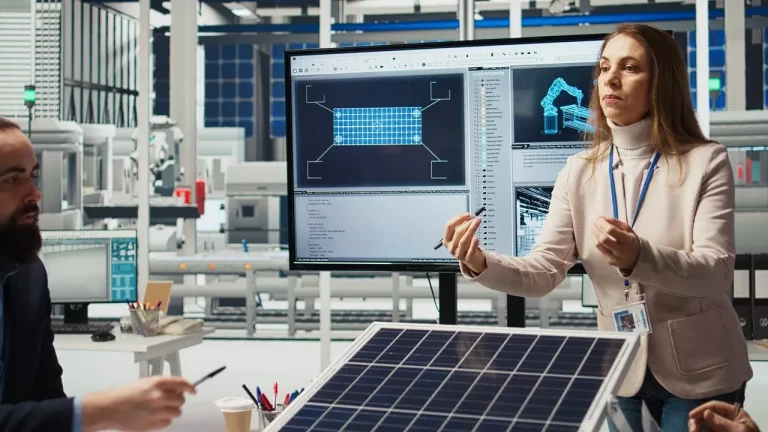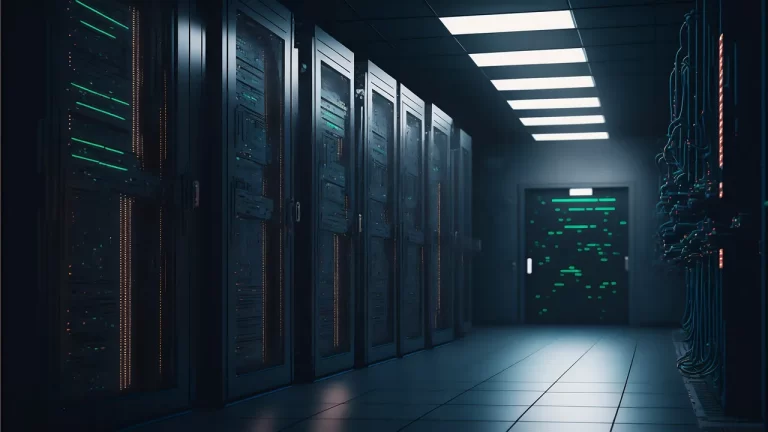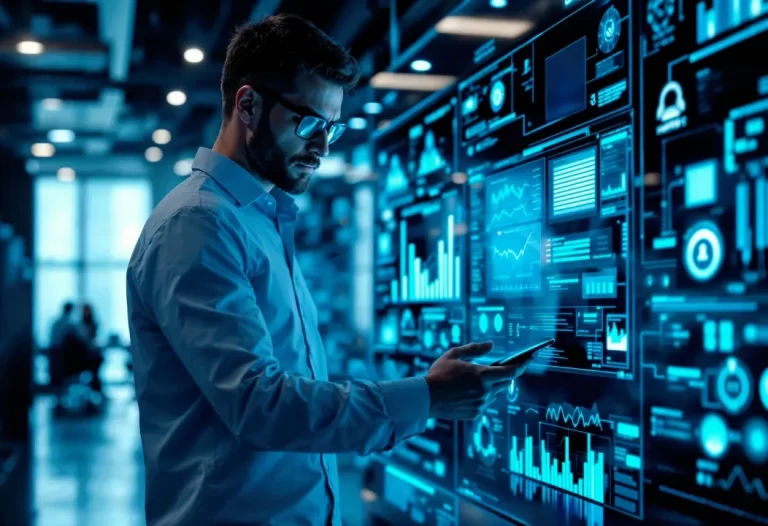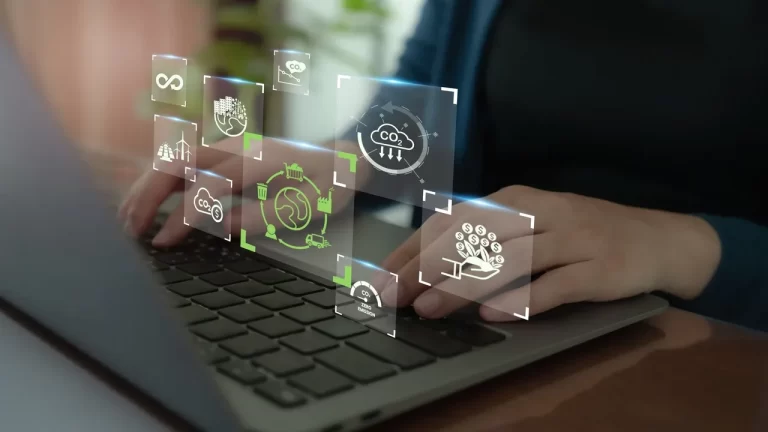Due to the emergence of the metaverse and various virtual reality (VR) applications, the need for highly effective data centers has increased. These applications demand ownership of colossal computing capacities and instant networks to perform effectively. As a result, data centers are likely to change to meet emerging needs by implementing new technologies such as edge computing as well as the 5G/6G networks. There are quite apparent benefits of performing the computational processes at the edge: latency concerns, which are highly critical for real-time interactions in virtual environments, are addressed by shifting the processing closer to the user equipment. Furthermore, AI in employing data centers enhances the management of resources involved in metaverse-associated tasks due to higher workload demands.
Also, there are changes in the substantiation of overall data center architecture to suit the facility scale and adaptability needed for virtualization. When it comes to modular data centers that require more flexibility and the ability to increase their size, they are gaining popularity. These facilities are capable of handling high-performance GPUs and have specialized trays on which the complex virtual world can be drawn efficiently. Also, the increase in energy consciousness has seen the use of efficient cooling mechanisms and the use of green power because of the emerging problems of power demand by new digital structures.
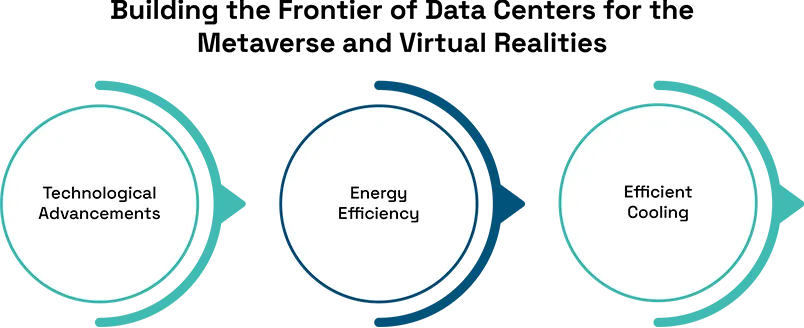
The Race to Decarbonize Metaverse Data and Commerce
In expansions in the metaverse, one obvious drawback that needs to be addressed is the environmental impact of the construct, especially as it pertains to its carbon footprint. A considerable amount of energy is used to fuel data centers that sustain virtual infrastructures, leading to efforts to decarbonize. There is severe capital expenditure on renewable energy, like solar and wind, for these facilities to be run using natural resources. Moreover, energy-saving solutions such as the utilization of liquid cooling and AI-driven resource utilization techniques in computer structures are being used to reduce energy consumption. These steps are executed to maintain the further development of digital platforms while being environmentally friendly.
In expansions in the metaverse, one obvious drawback that needs to be addressed is the environmental impact of the construct, especially as it pertains to its carbon footprint. A considerable amount of energy is used to fuel data centers that sustain virtual infrastructures, leading to efforts to decarbonize. There is severe capital expenditure on renewable energy, like solar and wind, for these facilities to be run using natural resources. Moreover, energy-saving solutions such as the utilization of liquid cooling and AI-driven resource utilization techniques in computer structures are being used to reduce energy consumption. These steps are executed to maintain the further development of digital platforms while being environmentally friendly
Furthermore, a newer term, “Industrial Metaverse,” is instrumental in enhancing the industrial systems, which cuts emissions. This paper discusses the potential of digital twins in virtual models of physical assets that allow us to expand knowledge about their functionality, reduce waste resources, and decrease negative effects on the environment. For example, utilities that can fix a facility without the need to travel, save a lot on emissions, while manufacturers will be able to notice any time they have to stop a machine and avoid such incidents.
Powering Metaverse Commerce
Gaming and AI are two more aspects that have a high impact on online shopping, especially concerning Generation Z as its spendable income rises. Communication and interaction among organizations such as Roblox and Google are designing their marketplaces to improve brand presence to enable them to sell tangible products in these virtual, three-dimensional environments. AI applications in developing 3D objects and scenes for the Roblox People application and shoppable virtual worlds using the generative AI model Gemini will be done by Google and Infinite Reality. Similarly, artificial intelligence also helps in providing individualization in stores through intelligent bots and dynamic displays and makes virtual stores more appealing and believable than ordinary e-stores. This change in using gamified, customized virtual environments is attributed to the familiarity of this generation with gaming spaces and could experience further expansion in the future.
In addition, the use of blockchain technology is revolutionizing the security and transparency of transactions within the metaverse. NFTs are currently used to give an ownership right to digital assets so that users can invest in virtual assets as they do in physical assets; the difference is that the former is digital. There are also emerging DeFi platforms providing some sort of financial service, including lending and borrowing within the decentralized financial market. New forms of innovation are continuing to establish a solid and evolving market environment, opening up new opportunities for emerging value-generating schemes within the digital space.
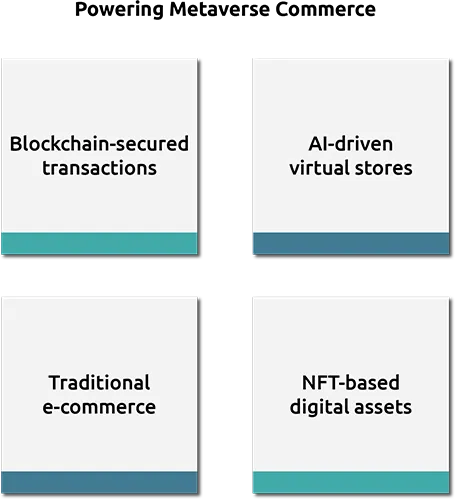
Substituting the Physical with Virtual
It is worthwhile to note that the metaverse presents increasingly virtual versions of real-life experiences and is gradually turning sectors like tourism and real estate into virtual ones. Historically, virtual tourism is a term used when describing the ability to see tourists as well as the actual exposure of destinations and areas virtually without involving the decision to travel. This immersive engagement with travel content can help to improve the travel planning process and generate a desire for travel among individuals interested in travel, thus promoting travel to potential customers. Besides, virtual travel allows for engagement in virtual travel experiences as well as adventures and activities because of the inability to travel physically.
In the course of the real estate business, virtual property tours have proven to be an essential tool, especially during the period when physical access to the properties is restricted. Investors can, for instance, move around in the properties in a virtual manner, thus getting a complete feel of the rooms without having to be physically present. This not only eases the buying process from the buyer’s end, but it also expands the opportunities of buyers’ demand for the sellers’ products. These virtual explorations are growing to be like those of real life as technology continues to progress, hence widening physical and cyber chasms even further.
Meeting in the Metaverse: A New Way to Travel
Immersive in virtual space and application, the metaverse is gradually changing the perception of meetings and events to mirror somewhat real-life experiences. Businesses and other organizations are conducting conferences, trade fairs, and meetings online where people from different parts of the world can communicate in real-world scenarios. This not only cuts down transportation costs and the ensuing carbon footprint but at the same time makes it easy to access resources and invites more participation by persons with physical challenges. Opportunities: Virtual events can be attended by a higher number of participants, people can personalize avatars, presenters interact with the audience, and there are opportunities to organize networking areas.
Additionally, the increased use of AI in the process of creating these avatars and the integration with the digital twins is making such videoconferences more realistic and functional. For example, the U.S. Air Force’s Model One integrates different military simulations into a single digital twin to facilitate decision-making and training in any digital warfare. This approach shows how the utilization of digital twins offers an opportunity to develop realistic platforms that can address collaboration and training needs in numerous industries.
Digital Twins: Optimizing Physical with Virtual
Digital twins can be described as a virtual copy of an actual physical asset that allows industries to test system configurations virtually. In construction, they assist architects and engineers to analyze the designs, foresee certain problems, and even avoid time wastage due to possible delays.
In the phased construction and operation, this use interacts with and updates IoT data in real-time. As the deployment of big data progresses, project managers have the ability to monitor performance and problems and even arrange maintenance patterns, providing better practices in overall function and output.

